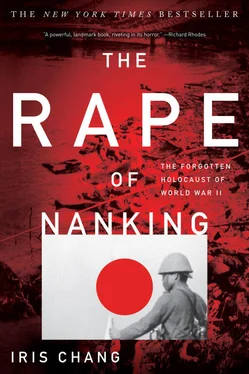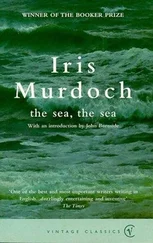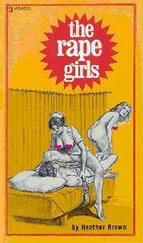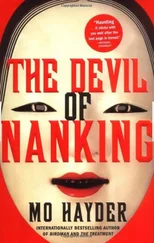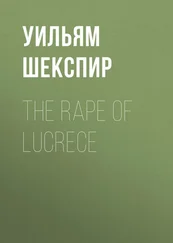156. “It is unbelievable that credence could be given”: Reader’s Digest (October 1938).
156. It is believed that John Gillespie Magee was the only Westerner who possessed a motion picture camera during the massacre, and that George Fitch may have borrowed this camera to capture the images of Chinese prisoners taken away by the Japanese. David Magee, son of John Magee, still owns the 16-mm-film motion picture camera used by his father to film scenes in the University of Nanking Hospital. Copies of the films are located in the family archives of Tanya Condon, granddaughter of George Fitch; David Magee, son of John Magee; and Margorie Wilson, widow of Robert Wilson. An English-language summary of the contents of the films can be found in “Deutsche Botschaft China,” document starting on page 141, German diplomatic reports, National History Archives, Republic of China.
156. “as unsavory a crowd”: Fitch, My Eighty Years in China, p. 121.
156. There was no doubt in his mind: Tanya Condon, telephone interview with the author, March 27, 1997.
157. At least one, George Fitch, suspected: Ibid.
157. “The Japanese military hate us”: John Magee, letter to family, January 28, 1938, archives of David Magee.
CHAPTER 7: THE OCCUPATION OF NANKING
159. “You cannot imagine the disorganization”: John Magee, undated letter (probably February 1938), archives of David Magee.
159. “several feet of corpses” : Durdin, New York Times, December 18, 1937.
160. Observers estimated that Japanese damage: For estimates of the damage, see Lewis Smythe, “War Damage in the Nanking Area” (June 1938), cited in Yin and Young, The Rape of Nanking, p. 232.
160. In a sixty-page report released in June 1938: Lewis Smythe to Willard Shelton (editor of the Christian Evangelist, St. Louis), April 29, 1938, box 103, record group 8, Jarvis Collection, Yale Divinity School Library.
160. Fires in Nanking began: Testimony of Miner Searle Bates (witness), Records from the Allied Operational/Occupation Headquarters, IMTFE transcript, pp. 2636–37, entry 319, record group 331; see also verdict in Tani Hisao’s trial in Nanking, reprinted in Journal of Studies of Japanese Aggression Against China (February 1991): 68.
160. Soldiers torched buildings: Harries and Harries, Soldiers of the Sun, p. 223.
160. The zone leaders could not put out these fires: Hsu Shuhsi, Documents of the Nanking Safety Zone , p. 51.
160. By the end of the first few weeks: IMTFE judgment; “German Archival Materials Reveal ‘The Great Nanking Massacre,’ ” Journal of Studies of Japanese Aggression Against China (May 1991); Lewis and Margaret Smythe, letter to friends, March 8, 1938, Jarvis Collection.
160. They burned down the Russian legation embassy: Hsu Chuang-ying (witness), testimony before the IMTFE, p. 2577; A. T. Steele, “Japanese Troops Kill Thousands: ‘Four Days of Hell’ in Captured City Told by Eyewitness; Bodies Piled Five Feet High in Streets,” Chicago Daily News, December 15, 1937; James McCallum, diary entry for December 29, 1937, Yale Divinity School Library.
160. The Japanese reserved American property for special insult: Reader’s Digest (July 1938).
160. “remarkable”: “Deutsche Botschaft China,” document starting on page 214, German diplomatic reports, National History Archives, Republic of China; Kröger, “Days of Fate in Nanking.”
161. Japanese soldiers devastated the countryside: “Deutsche Botschaft China,” report no. 21, document starting on page 114, submitted by Chinese farmers on January 26, 1938, German diplomatic reports, National History Archives, Republic of China.
161. The Japanese also used acetylene torches: Bates, testimony before the IMTFE, pp. 2635–36; Kröger, “Days of Fate in Nanking.”
161. Soldiers were permitted to mail back: IMTFE judgment; Bergamini, Japan’s Imperial Conspiracy, p. 37.
161. More than two hundred pianos: Bates, testimony before the IMTFE, p. 2636.
161. In late December the Japanese: History Committee for the Nationalist Party, Revolutionary Documents, 1987, vol. 109, p. 311, Taipei, Republic of China.
161. They coveted foreign cars: Lewis and Margaret Smythe, letter to friends, March 8, 1938, Jarvis Collection.
161. (Trucks used to cart corpses: Hsu Shuhsi, Documents of the Nanking Safety Zone , p. 14 (John Rabe to Japanese embassy, December 17, 1937, document no. 9).
161. But the Japanese also invaded Nanking University Hospital: Robert Wilson, letter to family, December 14, 1937; Bates, testimony before the IMTFE, pp. 2365–36.
161. A German report noted that on December 15: An excerpt of a verbal presentation by Mr. Smith of Reuters about the events in Nanking on December 9–15, 1937, in “Deutsche Botschaft China,” document starting on page 178, written in Hankow on January 1, 1938, German diplomatic reports, National History Archives, Republic of China.
161. “Even handfuls of dirty rice”: “The Sack of Nanking: An Eyewitness Account of the Saturnalia of Butchery When the Japanese Took China’s Capital, as Told to John Maloney by an American, with 20 Years’ Service in China, Who Remained in Nanking After Its Fall,” Ken (Chicago), June 2, 1938, reprinted in Reader’s Digest (July 1938). George Fitch was the source behind this article.
161. In January 1938, not one shop: Fitch, “Nanking Outrages,” January 10, 1938, Fitch Collection.
162. The harbor was practically empty of ships: Commanding Officer to the Commander in Chief, U.S. Asiatic Fleet (letterhead marked the U.S.S. Oahu ), intelligence summary for the week ending February 20, 1938, February 21, 1938, Office of the Chief of Naval Operations, Division of Naval Intelligence, general correspondence, 1929–42, folder A8–21/FS#3, box 195, entry 81, record group 38, National Archives.
162. Most of the city lacked electricity: Hsu Shuhsi, Documents of the Nanking Safety Zone , p. 99. By late January electricity was available in certain selected buildings in Nanking and water sometimes ran from lower hydrants; Minnie Vautrin, diary 1937–40, December 29, 1937; “Work of the Nanking International Relief Committee, March 5, 1938,” Miner Searle Bates Papers, Yale Divinity School Library, p. 1; Xingzhengyuan xuanchuanju xinwen xunliansuo (News Office of the Executive Yuan Publicity Bureau), Nanjing zhinan ( Nanking Guidebook ) (Nanking: Nanjing xinbaoshe, 1938), p. 49. (Information here comes from Mark Eykholt’s unpublished dissertation at the University of California at San Diego.) For more information on the Japanese massacre of power plant employees, see Minnie Vautrin, diary 1937–40, December 22, 1937, p. 125; and George Fitch diary, copy enclosed in file from Assistant Naval Attaché E. G. Hagen to Chief of Naval Operations, National Archives. Fitch reported that the employees “who had so heroically kept the plant going” had been taken out and shot on the grounds that the power company was a government agency (it was not). “Japanese officials have been at my office daily trying to get hold of these very men so they could start the turbines and have electricity. It was small comfort to be able to tell them that their own military had murdered most of them.”
162. (Many women chose not to bathe: Mark Eykholt (author of unpublished dissertation on life in Nanking after the massacre, University of California, San Diego), telephone interview with the author.
Читать дальше
